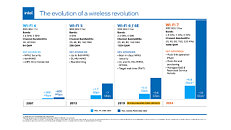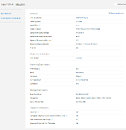- Joined
- Aug 19, 2017
- Messages
- 2,964 (1.06/day)
Intel today updated its ARK listings with two new networking chipsets: Wi-Fi 7 BE200 and Wi-Fi 7 BE202. The company unveiled IEEE 802.11be (Wi-Fi 7) specification-based chipsets despite the standard still needing final ratification. The Wi-Fi 7 standard promises data rates as high as 40 Gbit/s, with Intel's BE200 chipset using 2x2 TX/RX streams with 2.4 GHz, 5 GHz, and 6 GHz bands. However, as demonstrated by the adapter's maximum speed of 5 Gbit/s, real-world implementations might not initially reach the theoretical maximum speed. Various motherboards, like the upcoming Gigabyte Aorus Z790 Master X, are already planning to integrate this technology, showing that the industry is getting ready for a Wi-Fi 7 world.
What makes Wi-Fi 7 especially interesting is its raw speed and underlying technology designed to improve efficiency and capacity. Features like Multi-User Multiple-Input Multiple-Output (MU-MIMO) and Orthogonal Frequency-Division Multiple Access (OFDMA), which were introduced in Wi-Fi 6 and 6E, are mandatory in Wi-Fi 7. These technologies aim to optimize the overall performance of wireless networks, making them more suitable for bandwidth-intensive tasks like AR and VR. While full certification for Wi-Fi 7 is not expected until 2024, with widespread adoption to follow, the technology looks poised to become a significant aspect of our wireless future.


View at TechPowerUp Main Site | Source
What makes Wi-Fi 7 especially interesting is its raw speed and underlying technology designed to improve efficiency and capacity. Features like Multi-User Multiple-Input Multiple-Output (MU-MIMO) and Orthogonal Frequency-Division Multiple Access (OFDMA), which were introduced in Wi-Fi 6 and 6E, are mandatory in Wi-Fi 7. These technologies aim to optimize the overall performance of wireless networks, making them more suitable for bandwidth-intensive tasks like AR and VR. While full certification for Wi-Fi 7 is not expected until 2024, with widespread adoption to follow, the technology looks poised to become a significant aspect of our wireless future.


View at TechPowerUp Main Site | Source









